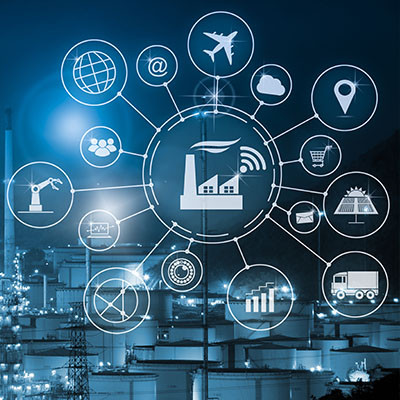Datalyst Blog
Industrial IoT is Bringing Big Data to Manufacturing
By now you’ve heard of the Internet of Things. It consists of all of the Internet-connected devices found on a given network. Different types of businesses have different ways that they can use the IoT. This month, we thought we would discuss the Industrial Internet of Things (IIoT) and the ways modern manufacturers use it to make big changes to their businesses.
What is the Industrial Internet of Things?
Before we get into use cases of IIoT technology, we first have to define it. IIoT is part of a manufacturing plan’s digital transformation. It effectively installs sensors and actuators in places that can collect accurate and actionable data, giving large scale organizations the ability to automate processes and reduce costs and environmental harm.
IoT vs IIoT
Generally, IIoT is a type of IoT. The former is a form of the Internet of Things that connects hardware and software components. The latter is more flexible and allows for greater integration of different devices and software into one system. In the case of IIoT, the technology is an integral part of the overall operating process. It provides real-time information and is crucial for manufacturing and other industries.
The difference between the IoT and the IIoT is essentially how the underlying devices are deployed. While IoT is genuinely inexpensive and typically used for end-user convenience, the IIoT is a more sophisticated platform that has specific use cases for business purposes. While all of these devices bring a layer of functionality and reporting capabilities that are simply not possible without them, IIoT platforms are developed to provide enhanced transparency, superior automation, and advanced analytics platforms.
Many IIoT devices are designed for more physically demanding conditions in manufacturing and other industrial environments, such as shipping, and organizational supply chain management. The main benefit is the reliability of the device in their reporting and the ability for administrators to build in automations that can save businesses a lot of time and effort. What’s more, because they can be monitored from remote locations with very little human interaction, they can be deployed in situations that traditional IoT devices simply can’t. This makes the technology robust, but also costly to implement.
IIoT Data and Integration
Since IIoT systems are built to streamline processes and circumvent the need for substantial manpower, it can pay dividends almost immediately if implemented correctly. Unfortunately, it requires an organization to make a hefty financial investment. The IIoT is different from the standard IoT as it is not just a simple cloud deployment. Organizations that are going to benefit the most from IIoT integration will have to commit to a ground up build, but once the platform is online and data collection begins, it will start to identify patterns very quickly. This data is extremely actionable, identifying bottlenecks and inefficiencies.
One of the core benefits of IIoT is the ability to identify inefficiency and then have applications built specifically to address those operational problems. Since IIoT is made up of not just hardware, but also digital processes, the complexity requires that it can be altered to fit the specific needs of the business deploying it.
The IIoT is one of the more interesting technologies that are taking hold in several different industries. This technology is now being used by manufacturers, shipping companies, large agricultural organizations, and large technology companies. What’s more, the development of smart neighborhoods and smart cities are being fueled by advancements in IIoT technology.
The future is going to be more connected (and automated) than we can imagine, and the IIoT is going to be at the forefront of this shift. The IIoT isn’t for your average business, but IoT tools can be deployed by any organization to help them be more efficient and reduce costs. If you would like to learn more about how your business can use the IoT to your advantage, reach out to us today at (774) 213-9701.


Comments